The Cost of Freedom
_Ed Note: This article contains video. You’ll find it about halfway through the text. _ The fall of Tripoli happened...
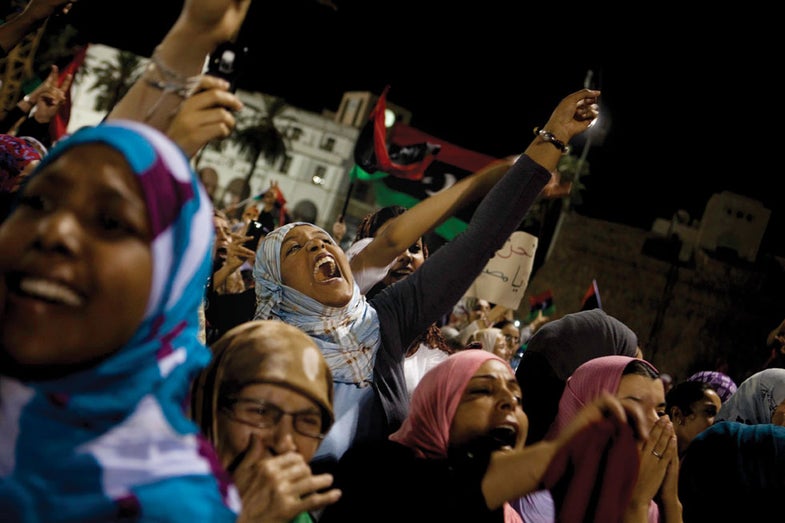
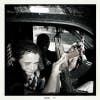
Libyan Uprising IPhone
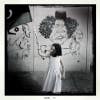
Libyan Uprising
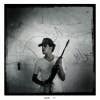
Libya iPhone Aug. 30 ,2011
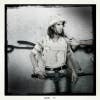
Libyan Uprising IPhone
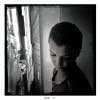
Libya iPhone Aug. 30 ,2011
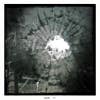
Libya iPhone Aug. 30 ,2011
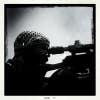
Libyan Uprising IPhone

Libyan Uprising, August 2011

Libyan Uprising, August 2011
_Ed Note: This article contains video. You’ll find it about halfway through the text. _
The fall of Tripoli happened much faster than I thought it would. I was in Egypt for Tahrir Square, but due to other commitments, I couldn’t move on directly to cover Libya as some of my colleagues did. I was following the story as closely as I could from wherever I was on assignment, monitoring the news, talking to my friends, following tweets from Libyan protestors, trying to figure out the optimal time to go. From the way things were moving, it looked like if a battle for Tripoli was going to happen, it would probably be sometime toward the fall.
I woke up in New York on August 20 to news that the rebels were just a few towns away from Tripoli. It was on, and I was caught flat-footed. I immediately started scrambling to work out the logistics to get myself there. Within 48 hours I was on a plane to Istanbul with Ben Lowy from Reportage.
From Istanbul we flew to Tunis, then from Tunis to Djerba, the closest airport to the Libyan border. There we met up with Heidi Levine, a Sipa photographer. On arrival, we found that one of Ben’s bags didn’t make it, the one with his flak jacket in it. We had a dilemma: Either wait and see if it turned up (and possibly miss the story) or press ahead with compromised protection. Ben’s a dad, so he wants to make sure he’s OK; at the same time, everything coming out of Libya said things were accelerating. We decided to split up the removable plates from my jacket between the two of us and press ahead. If we’d waited, we’d still be there. His bag hasn’t shown up to this day.
We found a driver in Djerba who said he’d take us into Libya, close to Tripoli. After a 10-hour drive, we still seemed to be in the middle of nowhere. Then we passed a temporary rebel office and he told us this was as far as he could go. We offered him more money to take us closer, but he was adamant. Bear in mind, there was fighting up the road, and this guy was from Tunisia and still had a 10-hour drive ahead of him, so it wasn’t entirely unjustified. But it didn’t leave us in a great spot.

As he pulled out of the parking lot, we turned around and were greeted by the last thing you want to see in a situation like this: around 30 TV journalists. Some had been there for a day already. We were told there were no cars and no way to get further in-country.
We got lucky, though. Within an hour, a large group of new rebels showed up, headed toward Tripoli. It looked like they’d be willing to take journalists with them. The three of us separated from the pack of journalists and approached a couple guys who looked like they were getting ready to leave. They said they’d take us. We hopped in the vehicle, thinking we’d be in Tripoli in a few hours, but they balked, saying the fighting was too unpredictable.
They agreed to take us to another town where it was safe. I had no idea where this was going to put us, but at that point, achieving forward momentum (and getting out of the clutch of journalists in the rebel center) was our first objective. So we drove for four hours to a town on the outskirts of Tripoli. The front had already moved past there and the streets were mostly deserted. It was pretty spooky.
We convinced the driver to take us further, and eventually we ran into a group of rebels on foot, essentially just people from the area with guns, out protecting their neighborhood. The guys who had driven us wanted to get out of there as quickly as possible, so they dumped us with the locals. We’d heard there were hotels closer to the city, but information about where they were and where the fighting was proved sketchy. We had 10 people telling us 10 different things: They’re fighting there, they’re not fighting there; you can go there, you can’t go here. They were very nice people, even offering to put us up for the night, but they had no idea what was really going on. We needed things they couldn’t give us: a car and an Internet connection, somewhere safe to stash our gear near the city center, someplace we could file our stories from.
And that’s when we met Abdu. It’s uncanny how often this happens. When things are at their darkest, when you’re stuck and have no idea how to move forward, a random guy will just walk up to you and offer you exactly what you need. Abdu walks up, speaking perfect English. “Oh yeah, you want to go to the hotel? Hop in my car. I’ll take you to the hotel. You need a SIM card for your phone? Here you go.” We grabbed our stuff and he drove us right there. In an instant you go from having no idea where you are or what to do, then suddenly you’re in a fancy hotel with Internet access and working phones. Abdu was amazing. We immediately hired him to stay with us for the next week.
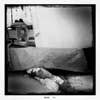
When we arrived at the Corinthia Hotel, the front desk was mobbed. A day earlier, this place was in a war zone and had been empty. Now journalists from all over the world were swarming on them. There were plenty of rooms, but staff was scant and as a five-star hotel, they refused to rent anything until it was cleaned. We had been traveling for three days and didn’t care what the rooms looked like. Eventually, Heidi managed to charm the manager into getting us an unmade room. Then it was finally time to sit for a second. To prepare, gather information, charge batteries, maybe even sleep for a few hours. Tomorrow the work would begin in earnest.
We spent the next several days with the rebels as they fought the remnants of the Gadhafi troops, taking back their city block by block. We were some of the first journalists to discover several sites of war crimes perpetrated by both the government and the rebels. We came across a makeshift hospital for Gadhafi’s forces where it looked like the rebels had executed everyone in their beds. The next day we arrived in a warehouse where the Khamis Brigade (Gadhafi’s special forces) had taken 50 or more prisoners—not even soldiers, just civilians they deemed rebel sympathizers—and shot them, then burned them alive. Survivors and family members began showing up while we were there. It was an extremely emotional scene.
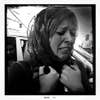
Traveling with the rebels ended up being quite stressful. Most of them had no training. The rebels had received weapons from abroad and captured several of Gadhafi’s weapons depots, so they were well armed, but most of them were simply Libyan civilians who had been radicalized by an oppressive regime then handed a weapon and told to make things right. When you have that many untrained people with that many guns, you get problems. A number of people who were killed or wounded were shot accidentally by their own people.
It didn’t help matters that this all happened during Ramadan, when Muslims fast during daylight hours. Even though they were in battle, these guys were keeping the fast. I never saw them eat or drink during the day. Walking around in the summer in Libya without food or water will make you a bit off by the end of the day.
Celebratory gunfire was a huge issue as well. Moving through town with them was like documenting the angriest parade in the world. Hundreds of guys with guns, or RPGs, half of them wearing flip-flops, and all of them singing, marching up the road. Then they’d stop and fight for a little bit, take some prisoners, then resume their singing. There was no formation or plan or command structure. And we were marching through streets surrounded by high-rises. A few good snipers could really have done some damage. At one point I was with a group of rebels and they got into a gun battle. After 20 minutes or so, they realized they were shooting at another group of rebels.
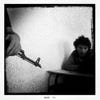
In bad turbulence, you look at the flight attendants’ reactions to see if it’s serious. When you’re in a war zone, you watch the American soldiers or other experienced, well-trained troops you’re traveling with to understand the situation. With the Libyan rebels, there could be explosions all around and you might have one guy walking around oblivious, another guy crawling on the ground taking cover, another guy shooting from the middle of the street and someone else celebrating. It’s very hard to process a scene like that intelligently; there’s often no real form and no way to tell what’s actually going on. A lot of journalists got wounded.
There was a significant battle in an area called Abu Salim, one of the bigger Gadhafi strongholds, where they thought Saif (one of Gadhafi’s sons) might be. I was with a group of rebels as they cleared a building floor by floor. I’d seen trained professionals do this, but this version didn’t bear any resemblance. Their technique seemed to be to shoot up the stairwell then quickly run up, willy-nilly. The first few flights, everything was fine. Then on the fourth flight, as two of them ran around a corner, bang—one of them got shot in the head. He died right in front of us, about eight steps up from me.
Immediately, everyone flew down the stairs and outside, then started firing their AK-47s into the building. It was a sturdy, thick-walled place, so their bullets probably weren’t even penetrating, but they were just shooting and shooting, wasting loads of ammunition. Then they tossed hand grenades in, followed by a couple RPGs. Apparently even that wasn’t enough, so they brought in this vehicle with a makeshift howitzer on it. When they fired it, the vehicle just fell apart. It blew its own doors off.
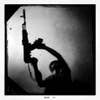
After half an hour of everyone taking turns running out and shooting into the building, they headed back in again, up to the fourth floor. They got shot at again. And they still didn’t know how many guys they were dealing with in there. So out they came, and again, for another 20 minutes or so, unloaded everything they had into this building. There was no end in sight, and it was getting dark.
And then they stopped. They just stopped and walked away. It was time to break the Ramadan fast now that the sun was down. Nobody even went in to see if they got the guy. Suddenly the battle was over and we were eating dates and drinking water. When I went back later to speak with people from the building they said that while a few Gadhafi soldiers were killed, a number of others had gotten away.

It’s an unsettling environment to work in, to say the least. The pictures are why you’re there risking your life in the first place, so you’re constantly doing visual thinking. But simultaneously you’ve got some piece of your brain keeping track of your basic survival. I don’t believe any photograph is worth dying for, certainly not a photo of one out of a thousand street battles in Libya. So you’re as careful as possible, understanding, of course, that a mortar could drop in at any time and make all your caution irrelevant.
But you learn how to manage your fear, to use it to your advantage—to not let it paralyze you, but also not to be so fearless that you run into the street and take photographs that put you at risk. You’re constantly trying to find that balance and manage risk and reward. That said, I’ve run across a street under fire just because the light was better on the other side. But when I do those things, I try to do them with some semblance of judgment and sanity and awareness that some places are just too dangerous to be, no matter how good the pictures are.
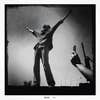
It’s an extreme place to put yourself, but you’re taking all these risks in service of a higher ideal. I’ve spent a lot of the past 20 years documenting events like these, when countries are being born or reborn, reestablishing their basic human rights, dignity and values. It is imperative that there are independent voices telling these stories when these events occur. Libya was a place where journalism, and especially photojournalism, played an important part in telling the world what was happening, who the people were and what roles they played. I look at my responsibility as one of the chroniclers of history very seriously; people need to see these things, and still photography is a particularly powerful way to show them. It’s important to document the battles as well as the war crimes, to make sure that people know about them. It’s key knowledge for the people of a new country to have—to know what happened to them, so they can face it and move forward. AP